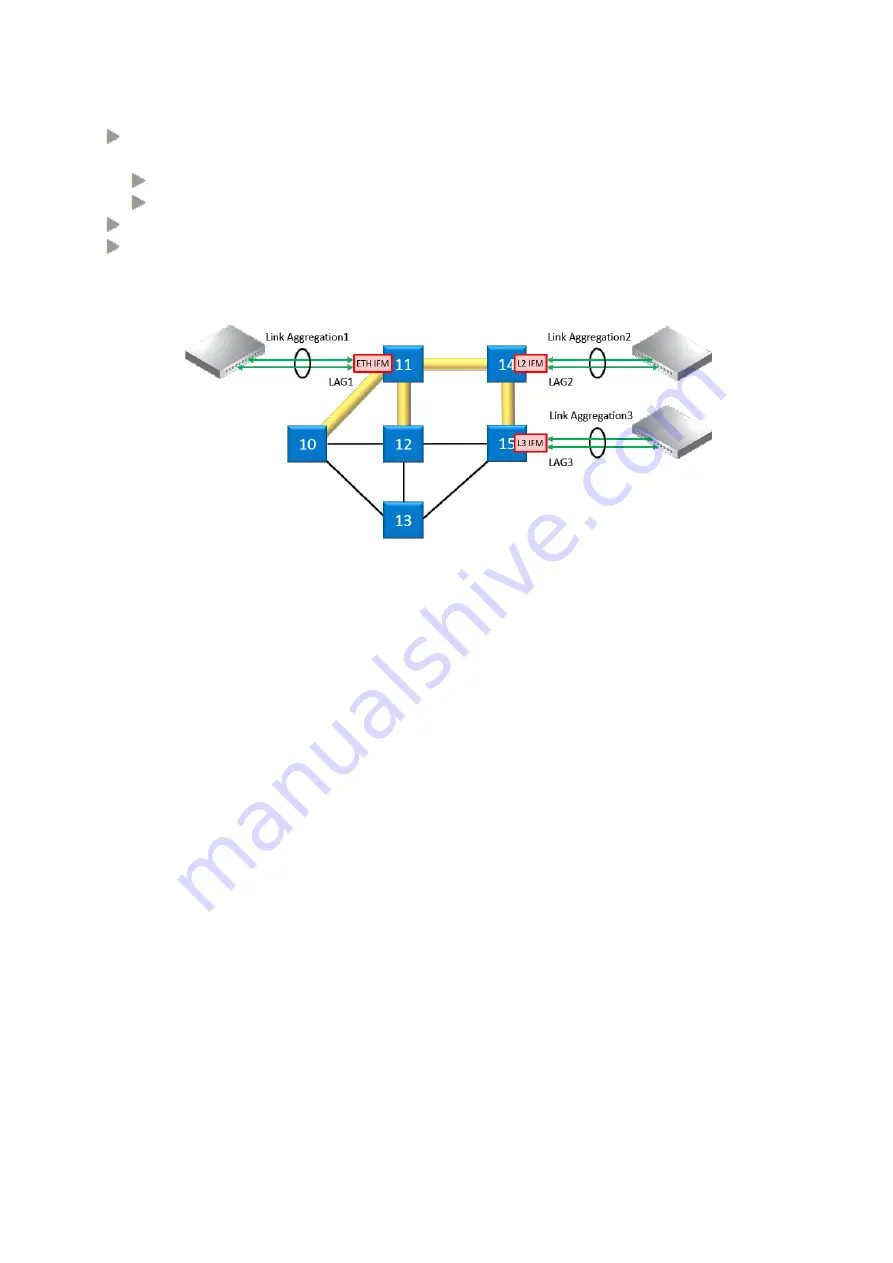
18
Central Switching Module PTN-CSM310-A/PTN-CSM540-A
Release 03 05/2020
The resulting combined logical link:
has at least the bandwidth of one individual link (1 Gbps bandwidth for a 1G port, 10 Gbps
for a 10G port), but can have more bandwidth if both conditions below are met:
multiple streams from different MAC addresses are streamed over the LAG;
the LAG algorithm loadshares these streams over different links within the LAG;
offers loadsharing based on the source and destination MAC addresses;
offers redundancy in case one of the individual links should fail.
LAG is configured in HiProvision. See Ref. [2Eth] in Table 2 for more configuration information
in HiProvision.
Figure 7
Link Aggregation and LAGs
2.2.7
Self-test
When switching on the supply voltage, the node goes through a self-test, before switching
itself into the network. During this test, the main function blocks are tested e.g. processor,
memories etc.…
2.2.8
Alarming
a.
Hardware Device Alarms
The CSM supervises all the hardware in the node and generates the necessary device alarms
when something goes wrong in the node. These alarms are collected by HiProvision. It can be
configured in HiProvision via the Device Settings to output one or more of these alarms to the
digital output contacts (=DO) on the NSM in the node, see also Ref. [2Mgt], [3], [3b] in Table 2.
b.
SNMP Traps (future)
Every module in a Dragon PTN node, either NSM, CSM or IFM has a MIB onboard. Every
parameter in each MIB can be configured for alarming. The CSM will monitor all the MIBs in
its node. If a parameter value changes somewhere in the node, the CSM will send out an
(SNMP) trap via the management or DCN channel on the network. HiProvision decides
whether the captured (SNMP) trap results in an alarm or not. All the alarms will be visualized
by HiProvision.
E.g. the user can configure the minimum and maximum value of a temperature parameter on
an IFM. If the temperature exceeds the allowed configured temperature range, HiProvision
will show a temperature alarm for this module on that specific node.








































